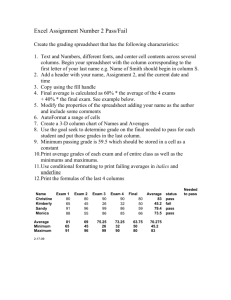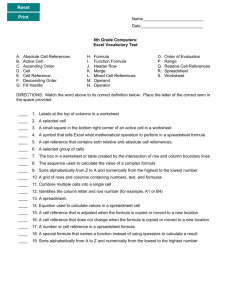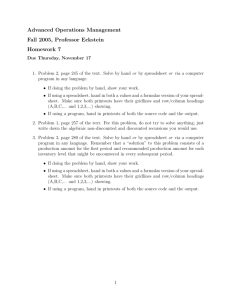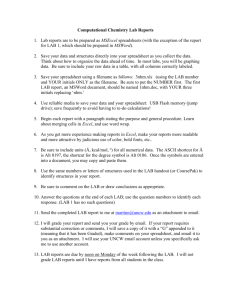Spreadsheet Vocabulary
advertisement
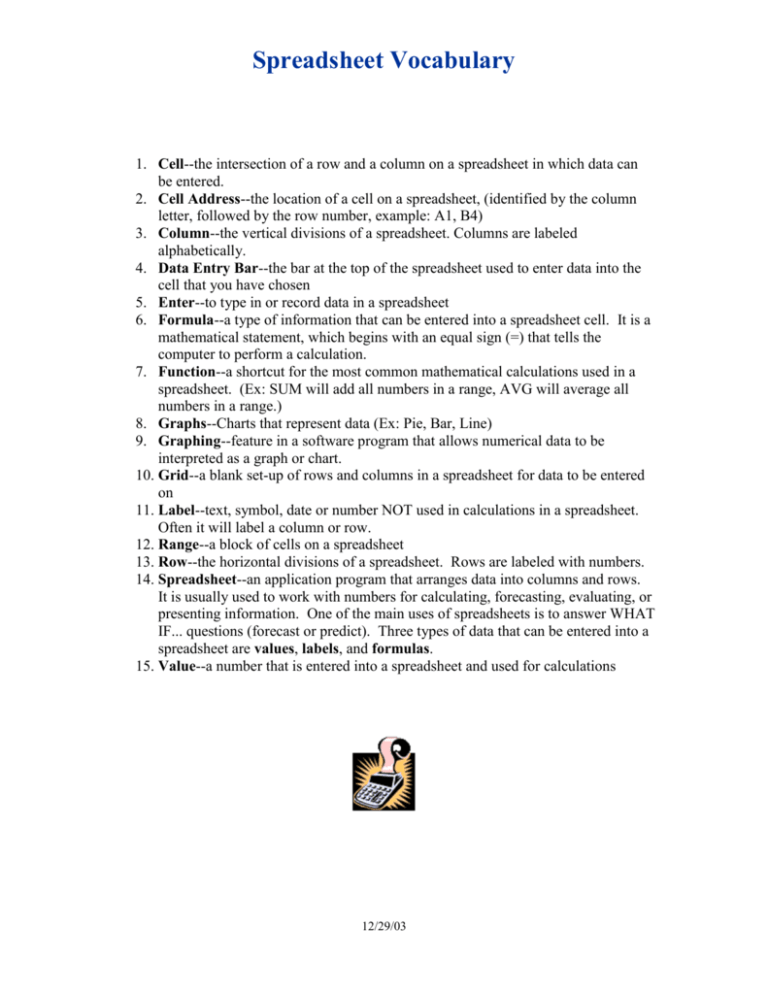
Spreadsheet Vocabulary 1. Cell--the intersection of a row and a column on a spreadsheet in which data can be entered. 2. Cell Address--the location of a cell on a spreadsheet, (identified by the column letter, followed by the row number, example: A1, B4) 3. Column--the vertical divisions of a spreadsheet. Columns are labeled alphabetically. 4. Data Entry Bar--the bar at the top of the spreadsheet used to enter data into the cell that you have chosen 5. Enter--to type in or record data in a spreadsheet 6. Formula--a type of information that can be entered into a spreadsheet cell. It is a mathematical statement, which begins with an equal sign (=) that tells the computer to perform a calculation. 7. Function--a shortcut for the most common mathematical calculations used in a spreadsheet. (Ex: SUM will add all numbers in a range, AVG will average all numbers in a range.) 8. Graphs--Charts that represent data (Ex: Pie, Bar, Line) 9. Graphing--feature in a software program that allows numerical data to be interpreted as a graph or chart. 10. Grid--a blank set-up of rows and columns in a spreadsheet for data to be entered on 11. Label--text, symbol, date or number NOT used in calculations in a spreadsheet. Often it will label a column or row. 12. Range--a block of cells on a spreadsheet 13. Row--the horizontal divisions of a spreadsheet. Rows are labeled with numbers. 14. Spreadsheet--an application program that arranges data into columns and rows. It is usually used to work with numbers for calculating, forecasting, evaluating, or presenting information. One of the main uses of spreadsheets is to answer WHAT IF... questions (forecast or predict). Three types of data that can be entered into a spreadsheet are values, labels, and formulas. 15. Value--a number that is entered into a spreadsheet and used for calculations 12/29/03



